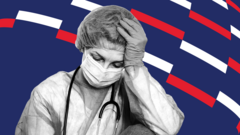The rise of digital communication raises the question: does writing by hand still matter? According to recent rulings from Indian courts, particularly the Punjab and Haryana High Court, the answer is a resounding yes, especially when it comes to medical prescriptions.
Legible handwriting has long been a point of humor regarding doctors, who are often joked about having notoriously unreadable scrawl. However, a recent court ruling declared a ‘legible medical prescription’ as a fundamental right, highlighting its potential impact on patient safety.
This ruling triggered in the context of a bail hearing unrelated to handwriting issues. The judge, Justice Jasgurpreet Singh Puri, highlighted the severe consequences that can arise from illegible prescriptions, stating that even a single unreadable letter could pose risks to life.
The court's order, addressing concerns over the quality of medical documentation in India, mandates that all doctors must start writing prescriptions clearly, preferably in capital letters. It also calls for the integration of handwriting lessons into medical education and sets a two-year timeline for implementing digital prescriptions across all medical facilities.
Meanwhile, Dr. Dilip Bhanushali from the Indian Medical Association expressed willingness from the medical community to comply with the court's directions. While there has been a significant transition to digital prescriptions in urban areas, challenges remain in rural settings where handwritten prescriptions are still prevalent.
The judiciary's emphasis on handwriting is not just a matter of aesthetics; it is rooted in patient safety. Studies have indicated that unclear prescriptions can lead to serious implications, and examples of misinterpretations leading to tragic outcomes abound. A report indicated that poorly-written prescriptions contributed to 7,000 preventable deaths annually in the US alone.
In conclusion, as efforts move towards ensuring clarity in medical communications, the directive serves as a prompt for a necessary cultural shift within the medical profession, which prioritizes patient welfare above all else.














